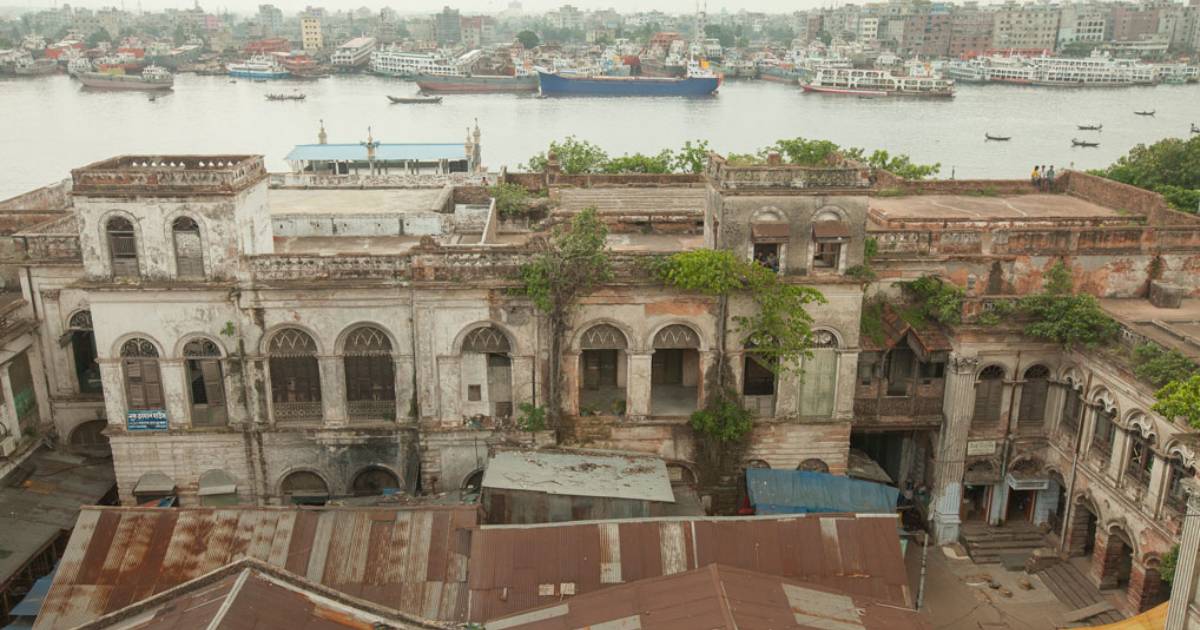
Bangladesh lays in the biggest river delta of the world - the Ganges also known as the Bengal Delta system. A variety of crops including jute, tea, and rice are grown on its fertile floodplains and fishing, of course, is also an important activity in the region, so the hundreds of rivers forming Bangladesh’s huge network of big and small waterways are vitally important for transport and trade. Its rivers are truly the lifeblood of Bangladesh.
Kaleidoscopic impressions
Whether you linger listening to the piercing sounds of the blaring’ sirens of the ferries or the calming call to prayer or decide to leave the hustle and bustle of the city for the beautiful green countryside either in a luxurious steamer or ride a rickety wooden boat to the other side of the river.
You will always treasure the kaleidoscopic impressions from this very unique place. Sadarghat may not be the easiest place to maneuver your way through but not immersing yourself in the experience is like taking a shower in a raincoat.
Stairs leading to the water
Access to the river is provided via the Port of Sadarghat. The name “Sadarghat translates as “sadar=city” and “ghat = “wharf” or alternatively “stairs leading to the water”. From the wharf, you see the Buriganga river shimmering like silver in the evening sun. Dozens of river craft dot its surface.
You can see many kind of vessel like passenger ships, cargo ships, and “noukas”- traditional wooden boats. If you are lucky, you might catch a glimpse of one of the 4 remaining “Rockets”, colonial-era paddle-wheel steamers, belching diesel fumes into the air. ‘Rocket’ you wonder? Well, they were once the fastest mode of transportation on the river!
The busiest river port in the country
These days, the Port of Dhaka is Bangladesh's busiest port - handling millions of tons of cargo and passengers a year. As a result of the sheer amount of activity as well as industrial and human waste, the Buriganga River is today, unfortunately, one of the most polluted rivers in Bangladesh.
It is hard to believe that in the 17th century the Buriganga river was the main source of drinking water for the Mughals, who made Dhaka, already a prime location for trade - their capital of Bengal in 1610.
Venice of the east
Dhaka's strategic location on the river made it also the perfect place for Eurasian and European merchants trading internationally in muslin, silk, and cotton goods. The banks of the river along with the old city – also known as the “Venice of the East” - were lined with shops, warehouses palaces, and mansions.
Some of the surviving buildings along the river today include Ahsan Manzil, an official residential palace constructed in the mid 19th century and Ruplaal House, an early 19th-century mansion. During colonial times, the British developed many ghats (wharfs), including Wiseghat, Northbrook Hall ghat, and of course Sadarghat.
Sadarghat today is a place filled with deafening pandemonium and boisterous buzz. It is a port that is chaotic and dynamic, crazy and thrilling, smelly and fragrant, crowded and bustling. For some, it is a relentless assault on the senses, for others, its manic pace is absolutely thrilling.






0 Comments